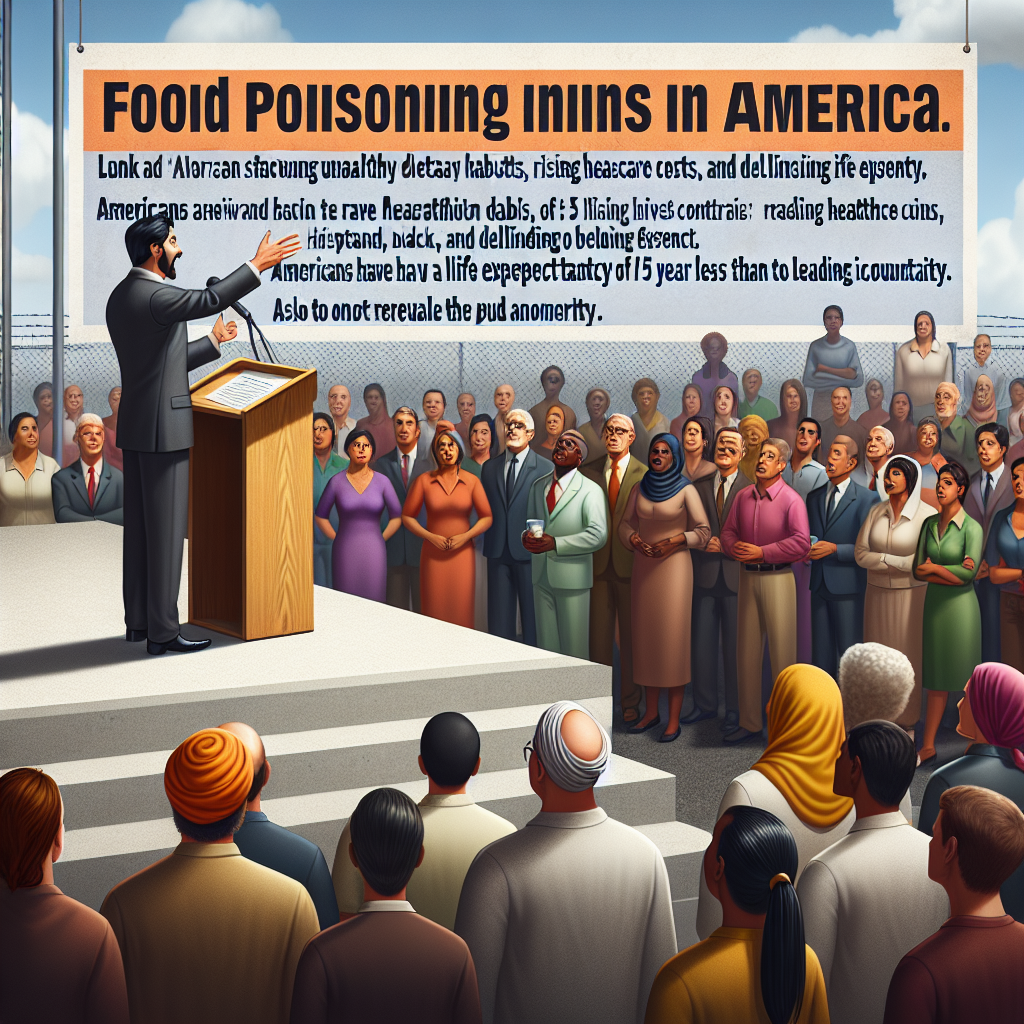Americans are facing food poisoning.” Former independent presidential candidate Robert F. Kennedy Jr. emphasized this during his campaign. He linked unhealthy American dietary habits to the rising costs of chronic disease healthcare and declining life expectancy.
Americans have a life expectancy 5 years shorter than other developed countries, possibly due to 50-70% of their diet being processed foods, the highest proportion among developed countries. In fact, many food additives and ingredients used in the US are already restricted or banned in Europe.
Kennedy is now nominated to be the Secretary of Health and Human Services in the new Trump administration, overseeing 80% of the US food supply, as well as cosmetics, drugs, and medical products.
Kennedy’s main focus is on reviewing key food ingredients such as high fructose corn syrup, seed oils, and food dyes. Why is he doing this? What grand plan does he have to exclude these ingredients from Americans’ diets?
During his campaign, Kennedy repeatedly emphasized the risks of high fructose corn syrup (HFCS), the most common sweetener in processed foods in the US.
Although the EU and the US both approve the use of HFCS, Europe uses a modified form called isoglucose with a fructose content of 30%, while US HFCS has a fructose content of 42-55%.
The most commonly used is HFCS 55, which contains 55% fructose. This higher concentration formula can make food taste sweeter with less sweetener.
The overall composition of HFCS is similar to sugar, but undergoes additional enzyme processing during production. While there is no clear evidence that HFCS is more harmful than sugar, as a common ingredient in ultra-processed foods, HFCS has drawn significant attention.
HFCS is a cheaper ingredient than sugar. In the late 20th century, the use of HFCS rapidly increased among ultra-processed food manufacturers. The surge in HFCS consumption from the 1970s to the 1990s coincided with a significant increase in obesity among Americans.
Research conducted on mice by Princeton University researchers found that mice fed HFCS gained more weight than those fed sugar. Another study found countries with higher HFCS consumption had a 20% higher prevalence of type II diabetes.
The high fructose content in HFCS 55 burdens the liver, as it must convert fructose to glucose. Excessive fructose intake can lead to fat accumulation in the liver, causing fatty liver. Fructose also does not trigger insulin release or hormones that signal the brain to stop eating, potentially leading to binge eating and weight gain.
Like sugar, HFCS is associated with liver disease, heart disease, and behavioral issues.
Currently, the US Food and Drug Administration (FDA) classifies HFCS as “Generally Recognized as Safe” (GRAS), meaning the approval process for HFCS is less rigorous than for approved food additives. While the FDA sets permissible limits for food additives, substances labeled GRAS do not have specific allowable limits.
Kennedy has also criticized the widespread use of processed vegetable oils, also known as seed oils, which are common components in American processed foods.
Most seed oils like canola oil, soybean oil, corn oil, and sunflower oil are approved by the FDA as GRAS. Soybean oil is the most commonly consumed oil in the US.
These oils undergo extensive processing involving solvent extraction, degumming, neutralization, deodorization, and bleaching to maintain color and shelf stability, which may pose health risks.
While current evidence linking seed oils to significant health risks remains inconclusive, some studies suggest a link between popular seed oil consumption and cancer.
Compared to saturated fats like butter, most processed vegetable oils contain high amounts of mono and polyunsaturated fats, making them more prone to oxidation when heated. Ingesting oxidized fats can damage cells and genes.
Seed oils also have a higher Omega-6 fatty acid content than Omega-3 fatty acids, which has been associated with type II diabetes and inflammatory diseases.
Elizabeth Dunford, consultant at The George Institute for Global Health and adjunct assistant professor at the University of North Carolina, points out that synthetic food dyes, such as tartrazine, red 40, red 2, yellow 6, green 3, blue 1, and blue 2, are not commonly used or even banned in other countries, unlike in the US.
These food dyes are linked to cancer, ADHD, and other behavioral problems.
Most food dyes, made from petroleum, are cheaper and more durable than natural colors used in Canada and Australia. Kennedy specifically mentioned tartrazine or yellow 5 in products like Doritos, yogurt, vitamins, and cough syrups in his campaign video released in October.
Jennifer Pomeranz, associate professor at New York University’s School of Global Public Health, highlighted that tightening regulations on food additives is needed to protect consumers.
Kennedy’s promises to increase research funding into chronic disease causes and explore health and safety risks of various food chemicals annually suggest a positive shift.
Pomeranz emphasized the need for the FDA to prioritize the safety of food ingredients and the importance of Congress’s support for more resources in regulating food additives.
With better regulatory measures, the public will benefit from access to safe and nutritious foods, addressing concerns over potential health risks associated with common food additives.

